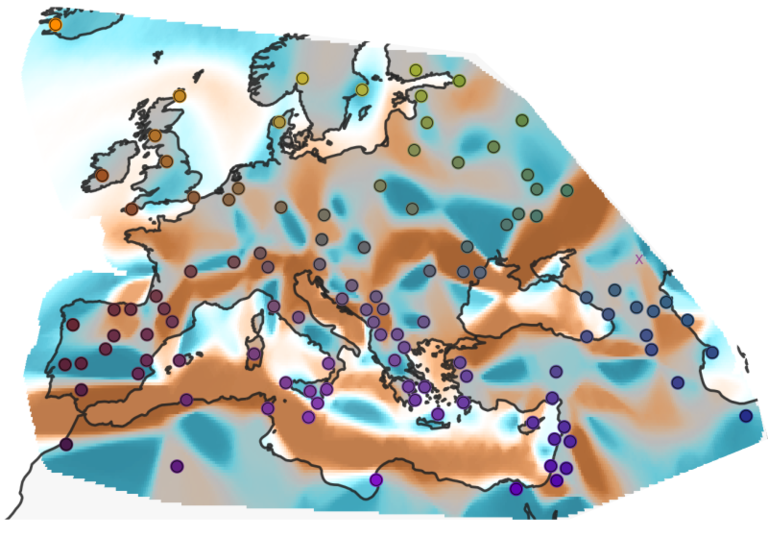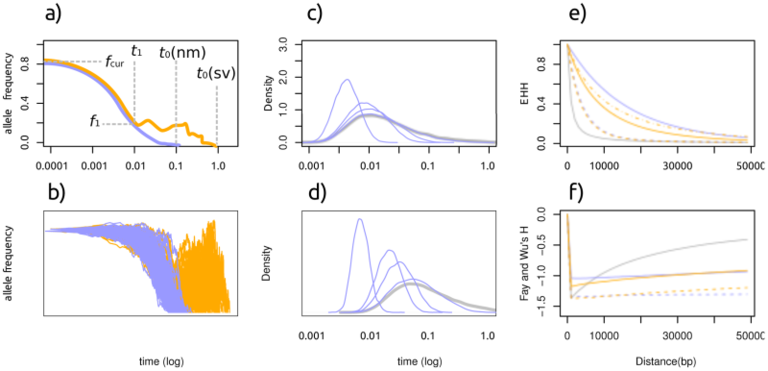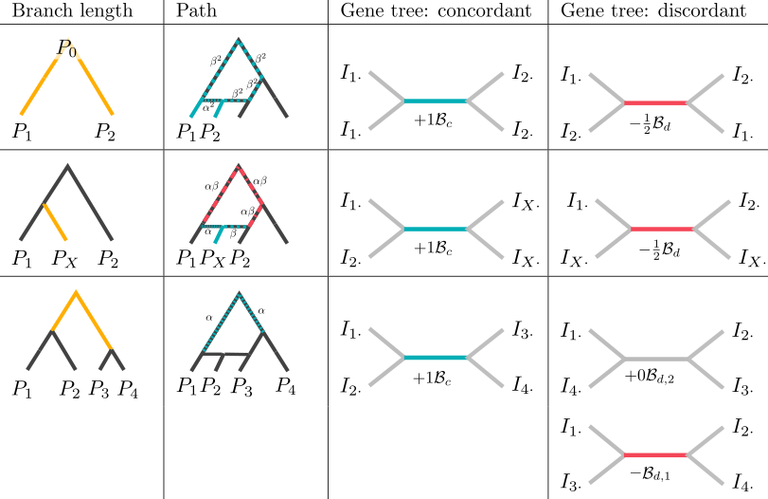Genetic Diversity through Space and Time (Ben Peter)
Overview
The focus of the recently founded “Genetic Diversity through Space and Time” group is to develop and apply novel and existing methods for population genetic inference. We are particularly interested in methods that use the large amounts of ancient and modern DNA being sequenced at the institute and elsewhere to infer present and past population structure, characterize contact patterns between different human and hominin populations, and to learn about local adaptation. Some ongoing and past projects are outlined in detail below.
1. Human fine-scale population structure
In the last years, hundreds of thousands of human genomes have been genotyped, and we now have large-scale, geographically dense genetic data from many geographic regions. We are developing and applying new methods that utilize this data to learn about the landscape of human genetic diversity, and how it changed through time.
Key publications:
- Peter BM, Slatkin M. The effective founder effect in a spatially expanding population. Evolution. 2015;69: 721–734.
- Novembre J, Peter BM. Recent advances in the study of fine-scale population structure in humans. Curr Opin Genet Dev. 2016;41: 98–105.
- Peter BM, Petkova D, John N. Genetic landscapes reveal how human genetic diversity aligns with geography. submitted.
2. Characterizing selective sweeps
Strong natural selection acting on a particular gene will produce a genomic signal called a selective sweep. Using approximate Bayesian computation, we have developed a method to learn about the evolutionary history of these sweeps, and learn various parameters of interest, such as the age of the beneficial mutation, time of onset of selection and strength of selection.
Key publication:
- Peter BM, Huerta-Sanchez E, Nielsen R. Distinguishing between selective sweeps from standing variation and from a de novo mutation. PLoS Genet. 2012;8: e1003011.
3. Inference from ancient and modern DNA
With the move to the Max Planck Institute for Evolutionary Anthropology, we are increasing our focus on developing novel methods for the analysis of ancient DNA. We are particularly interested in leveraging the dozens of newly sequenced Neandertal and Denisovan genomes to learn more about their population structure, history, and their interactions with modern humans.
Key publication:
- Peter BM. Admixture, Population Structure, and F-Statistics. Genetics. 2016;202: 1485–1501.


